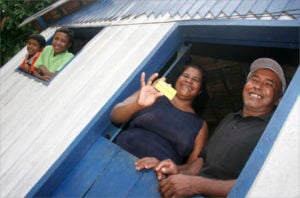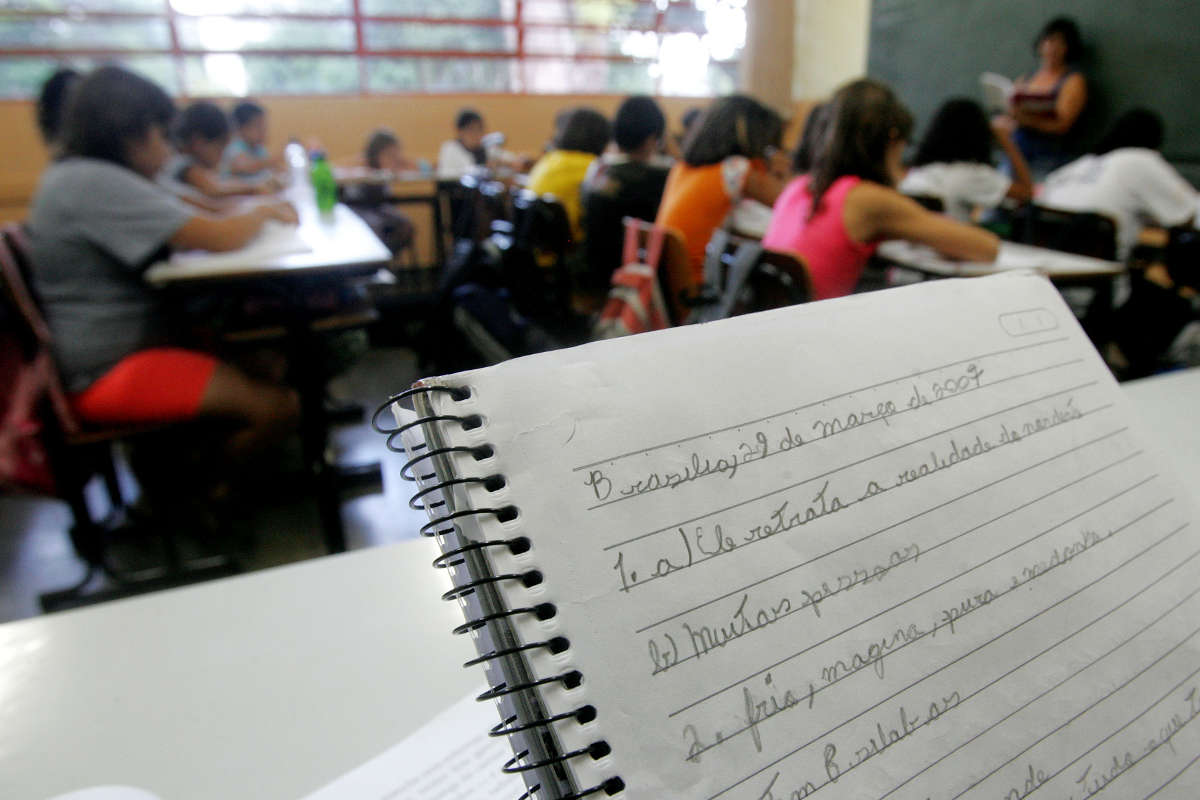On October 24, the magazine Carta Capital, published an interview with Minister of Social Development Tereza Campello, in which she speaks about the success of the Bolsa Família program and relates how, after 9 years, the myths and preconceptions about the program have all been overturned by the numbers:
A real reform of the State
After completing its ninth year on October 20, the Bolsa Família is a social program now acclaimed around the world. Almost all of the preconceptions and myths that fed the opposition to the creation of this program have been undone by the facts. The program did not place the votes of the poorest electors in the country in the hands of Lula or the PT (Workers Party). Because the benefits are deposited directly into the accounts of the beneficiaries, the intermediation that sustained local politicians in the four corners of the country for years were eliminated. It did not create a class of lazy and worthless dependents willing to give up a job for benefits that varied between R$32 and R$306 (US$16 and US$151) per month. It did not transform women into baby factories ready to bring children into the world in exchange for the small change offered by the government. The birthrate among the beneficiaries of the program is declining just as it is among other women. Even less evident was the supposed weakening of the relationship with school attendance. On the contrary. The data show that with the program, monitoring of student attendance became more efficient. School attendance of children receiving benefits of the Bolsa rose to 95.5% and the rate of promotion from grade to grade exceeds the average of students and the public school system (80% to 75%). School absenteeism has declined by 50%.
 De-mystification. Nine years later, the facts overturn the preconceptions about the program. Photo: Bruno Spada/MDS
De-mystification. Nine years later, the facts overturn the preconceptions about the program. Photo: Bruno Spada/MDS
Part of the team that set up the program in 2003, the Minister of Social Development, Tereza Campello, talks about the success of the Bolsa Família and goes even farther. She believes that the single registry system that began with the registration of the beneficiaries that permitted the preparation of a map of poverty, has been responsible for a true reformation of the Brazilian State. “Based on the vast amount of information that the single registry system provides, we are reorganizing the supply of public services in Brazil. We have a State that is more effective and more efficient in meeting social demands, particularly those of the most needy.”
Carta Capital: The Bolsa Família is nine years old. What is it that made the social program so successful?
Tereza Campello: Up to that time, Brazil had never had a program for the transfer of income, designed to both alleviate poverty and become a part of the non-contributive social safety net in Brazil. What existed previously were various small programs for income transfer for specific purposes. There was, for example, the “Vale-Gás” program that provided R$7 (US$ 3.45) to a small number of Brazilians to help them purchase cooking gas. There was also the “Bolsa Alimentação”, assistance for the purchase of milk and the “Bolsa Escola” a school attendance program. Under the Lula Government we simplified things. Instead of various fragmented programs, which were hard even for the beneficiaries to understand – because one would receive the Vale-Gas while another would get the Bolsa Alimentação and a third would get the Bolsa Escola – we combined them all into a single program. We used the criterion of impersonality. The benefits are deposited directly into an account, and the beneficiary withdraws them using a card. There are no intermediaries. And the benefits reach many more people. All the programs in practice prior to the Lula government taken together reached a total of 4 million families. Today benefits help 13 million families. One in every four Brazilians receives benefits from the Bolsa Família.
CC: Critics say the program represents an unconditional transfer of income, for example, school attendance.
TC: That is not true. After the creation of the Bolsa Família and the emergence of the single registry program, the government began to have more control over the conditional requirements. Previously, the best we could learn was whether or not the child was enrolled in school. Currently, we monitor school attendance of 15 million students. Students whose families are in the program have above average school attendance in the public school system. In the case of families that receive the Bolsa, attendance is as high as 95.5%. Of the less than 5% whose attendance is irregular, close to 30% are excused absences: generally because the children are sick for a period of time or because the family moved to a new address and was unable to find a vacancy in the school. In the remaining cases in which there is no justification, we are working to see that the children return to the classroom. Look: the beneficiaries of the Bolsa Família are those who live in families that are extremely poor, with [social] indicators that are infinitely worse the those of the rest of the population. Another bit of data: the dropout rates among those who receive the benefits are 50% less than the average. Do you know why?
CC: No.
TC: The mothers don’t let their children miss school. The children suffer the loss of the benefits if they drop out of school and the family no longer receives the Bolsa Família. They think twice before dropping out school. Children of families enrolled in the program also have a higher index of inoculation. All of the indicators show that the program has been and continues to be essential for breaking the inter-generational cycle of poverty. Children are no longer destined to be extremely poor just because their parents are poor. We now have children that are better educated, better fed and better prepared.
 “Single registry allows us to map poverty. With single registry we are able take public services to the most needy”. Photo: Isadora Pamplona
“Single registry allows us to map poverty. With single registry we are able take public services to the most needy”. Photo: Isadora Pamplona
CC: Was the government expecting the macroeconomic affect of the Bolsa Família, which is cited as one of the factors responsible for the recent expansion of the Brazilian economy?
TC: We were expecting a local economic impact – a microeconomic impact let us say. But the overall impact on the domestic economy, no. This impact, indeed, warrants further academic study. We know that each real that passes through the Bolsa Família program has an impact of 1.44 reais on the economy. This demolished the idea that the program is simply a waste of money. The Bolsa made it possible to create a permanent cushion of income that keeps Brazil from hitting the bottom of the well in times of crisis. Fifty million Brazilians continue to buy rice, beans and clothes …
CC: Were there those who did not believe that the beneficiaries would be able to manage their own money?
TC: Yes, even in the government. But the idea, as decided by President Lula was that the families should be given complete autonomy. For some, the money would be used only to buy food. For others, it was necessary to create an army of public servants to monitor the spending of the poor. It is an old prejudice. If I get a little extra money, will I spend it irresponsibly or will I tried to save? If someone from the middle class reasons this way, why should it be different for the poor?
CC: Never mind the thesis that women have children for the purpose of receiving more benefits.
TC: How many people in the middle-class would use this as an incentive to have another child? Does anyone think that 30 reais is enough to go out and make more children? The decision to transfer money directly to the beneficiaries, without an intermediary was fundamental. In the same way as the partnership with the municipalities was fundamental. Without the agreement of the municipal governments, the Bolsa Família would not have been extended to all corners of the country. One more point: mayors from every party became involved with the project. The agreements were not signed just with those municipal governments who represented part of the government’s political base.
CC: Has the program reached its limit or are there still many families to be included?
TC: The maximum limit is 500,000 families representing about 2 million Brazilians.
CC: Countries have adopted income transfer programs for a predetermined period of time. In Brazil, some experts are looking for a “way out”. How many years will the Bolsa Familia be necessary?
TC: At the moment, our efforts are focused on including families, not excluding families. Brazil is growing more slowly at this time but it is not stagnating. The economy continues to create opportunities for those with higher education as well as for those with high school and lower school education. We continue to create 1.5 million jobs per year. How, in a stagnant country could this have been possible if, in the recent past there was no “way out” for the poor? What do countries that adopt programs with a predetermined time period do? Families are given a chance to receive income support for a given period. If by the end of that time they have not managed to be included they return to poverty. Brazil chose to use a program with an indeterminate period. The poorest segments of the population of our country have been excluded for centuries. They never had a chance to receive an education or have proper nutrition. A malnourished child with various parasitic diseases, without ever having been encouraged to get an education is condemned in his adult life to low levels of development, even if he wants to study later. Another important bit of information: half of the beneficiaries of the Bolsa Família are under 18 years of age. What is the “way out” for this group? Surely it does not lie in the labor market. It lies in the classroom. In any event we made an enormous effort in professional training. Through the Brasil Sem Miséria (Brazil Without Poverty) program we provided professional training courses from Pronatec. We have created almost 500,000 openings for the low income population.

Good students. The passing rate of beneficiaries is higher than the average of public school students. Photo: Celso Júnior/AE
CC: And getting a job does not mean getting out of poverty.
TC: Many people believe that the poor do not work. But that is not the problem. In general they are able to find temporary work. They work for two, three months and then they are unemployed again. This is common in construction work, for example. When the project is done the employee loses his job. Of the adults participating in the Bolsa Família program, 72% are working. “Employability” is practically the same for the population at income levels similar to those not participating in the program. Another myth overturned. The Bolsa Família did not unleash, as many feared, the so-called “indolence effect”.
CC: Brazil has had a number of consultations with foreign delegations. What are these countries interested in learning from the Bolsa Família experience?
TC: A number of things. But I would say that our greatest contribution is the single registry program for beneficiaries. Through the single registry program we were able to map poverty in Brazil. I like to say that the Bolsa Família, and the single registry system, has made possible a real reform of the Brazilian State.
CC: How so?
TC: Part of the left rejects any discussion about reform of the State, because it is associated with neo-liberalism. And this would represent an argument for a minimalist State. That is not what I am talking about. I argue in favor only more effective State. A State that is more efficient in meeting the demands of the majority of the population. The single registry program permits us to reorganize the supply of public services. Everybody wants more nursery and pre-schools, right? But think about what would happen if the government limited itself to simply transferring funds. Where would the new nursery and preschools be located? Probably in the wealthier cities and better-off neighborhoods. This way it would not possible to locate public services, a health-care unit, a school, a nursery or preschool in the areas where the poorest segments of the population live.
CC: So the State, would wind up reinforcing inequality, right?
TC: Yes. The idea is to use the single registry program to reorder the supply of public services in various ways. I can give you an example. We crossed the single registry for the Bolsa with the registration from schools and student matriculations in Brazil. We selected all of the units that have more than 50% of their students registered with the Bolsa Família and are located in a poor neighborhood and where the other half of the students are also poor. All told, there are 60,000 such units in Brazil. We then selected those that were able to keep the schools open on a full-time basis. This meant that the school had to have a playground, available time, space, etc. … Half of them met these conditions. With this information in hand we sought out each of the Mayors. We asked why the school did not encourage more education and we offered our help. The experience has been very interesting. Today there are course offerings in photography, in Judo, Karate, theater and music … The school has become a space for participation and of community life for everyone, principally for the young people. The same thing happened with health.
CC: How so?
TC: President Dilma Rousseff decided to have, and managed to get approved at various levels, a Single Health System where the first aid clinics were built primarily in the poorer neighborhoods where lower income families are concentrated. The same thing can be done with reference centers for social assistance. The goal of the Single Health System continues to be universal health care and taking these services precisely to the most needy population it is essential to the success of achieving this goal. No one imagined that the Bolsa Família would become the platform that it has become today. As families participate in the program, their data are reported as part of the single registry system. And public authorities have access to information about these Brazilian families that was previously unknown. We know if the family comes from a gypsy or former slave background, if they come from a rural settlement or if they are indigenous Brazilians. The system has information about all the members of a given community, their level of schooling, their skills and where they work. This has already altered the way the Brazilian State is working; and it will change it even more so in the future.




